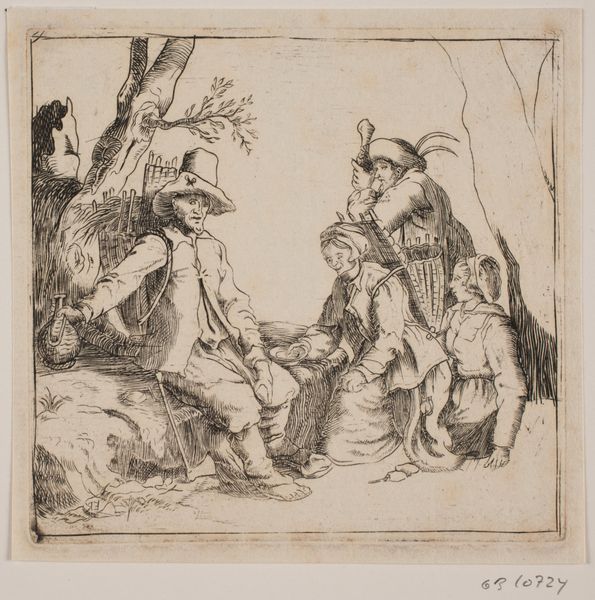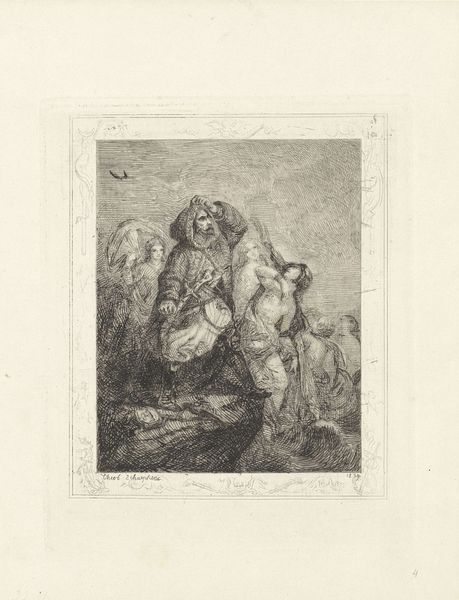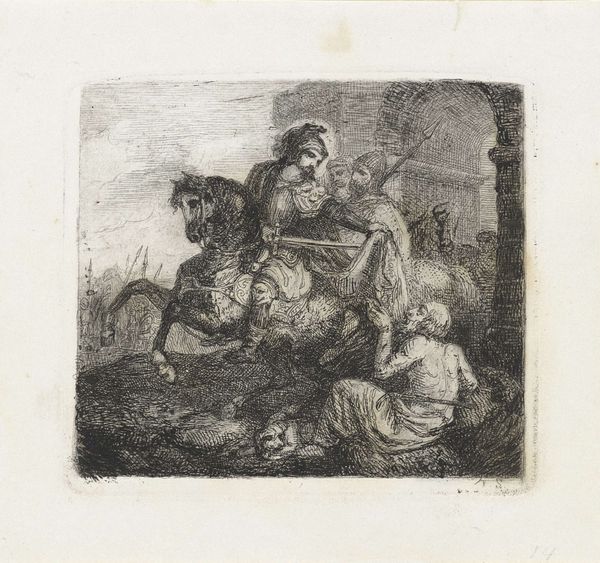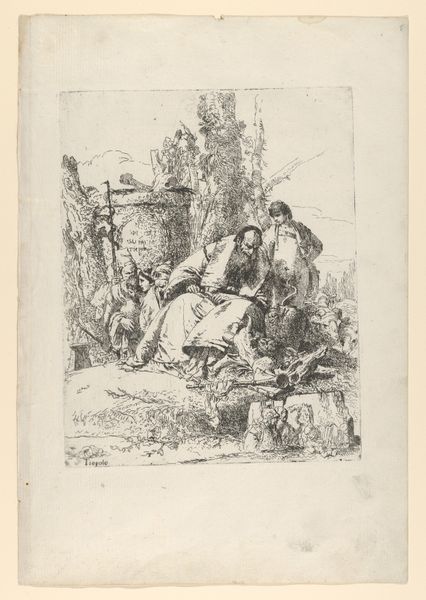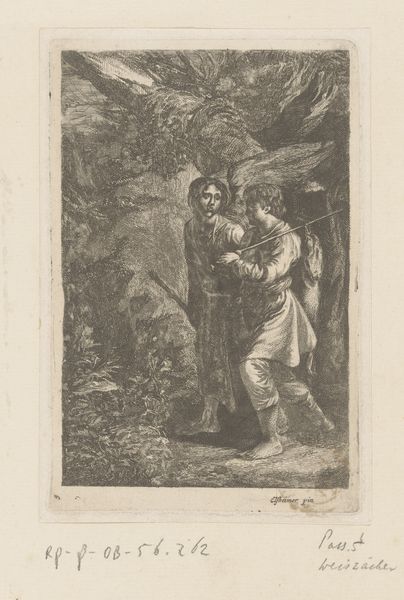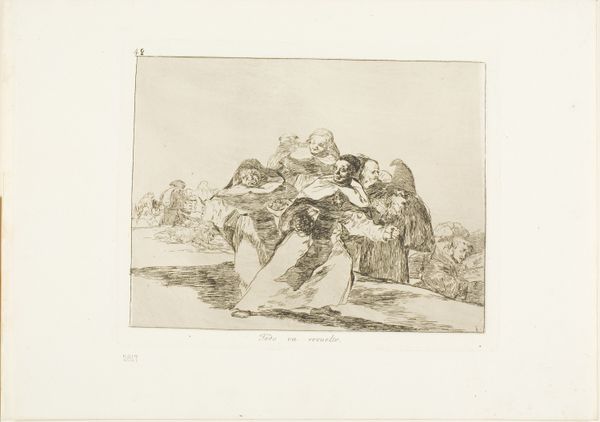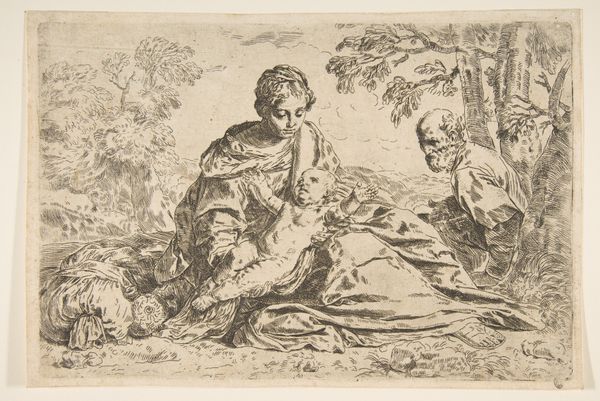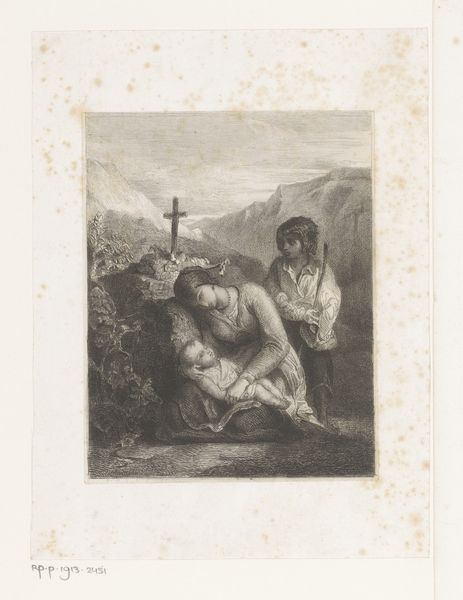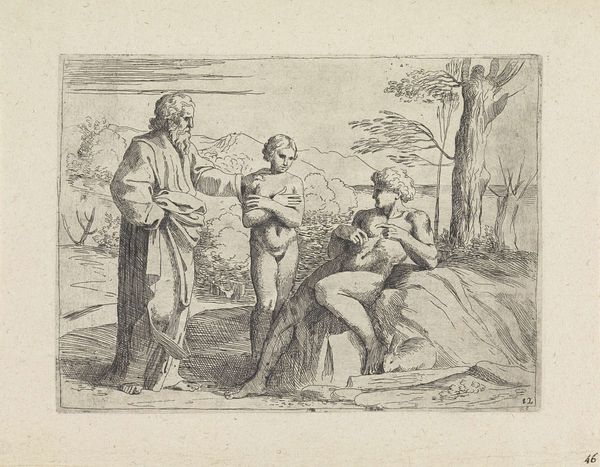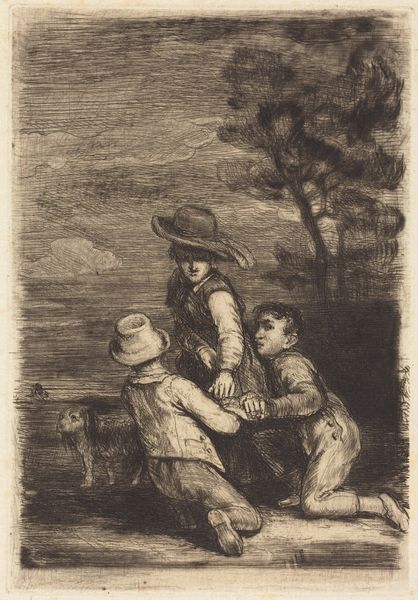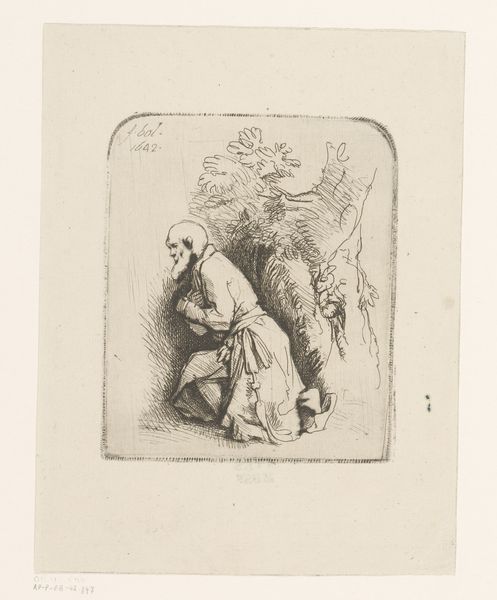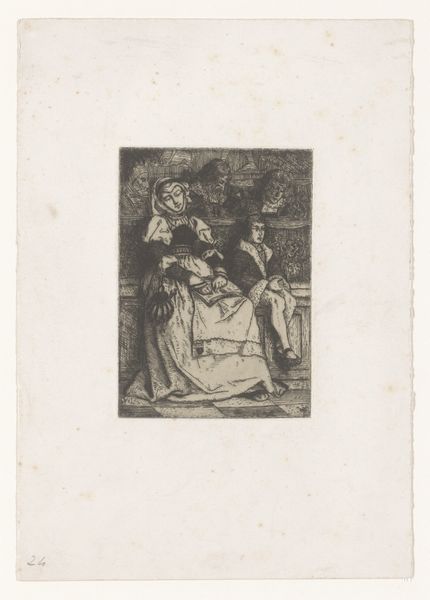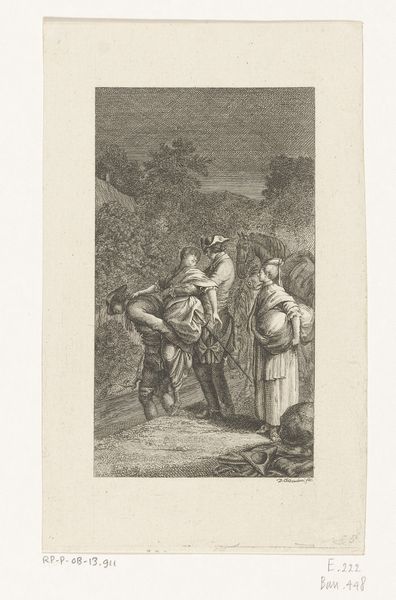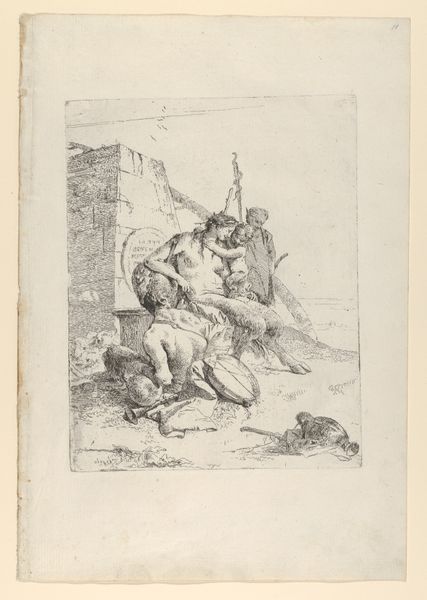
Dimensions: height 121 mm, width 89 mm
Copyright: Rijks Museum: Open Domain
Editor: This is Theodoor Schaepkens' etching "Jonkvrouw met paard en hond", made sometime between 1825 and 1883. The subject is a noblewoman with a horse and dog in a landscape, rendered in fine lines. The work feels delicate. What catches your eye when you look at this? Curator: I immediately consider the labor involved in producing an etching like this. The artist's hand, the chemicals used to etch the plate, the printing process… all speak to a specific mode of production in 19th-century printmaking. It emphasizes the consumption and dissemination of images to a broader audience. What was the social context for creating and viewing images like this? Editor: So, thinking about the process... how did this impact who got to enjoy art? Curator: Etchings like this were more accessible than paintings, so more people from varied social classes could afford them, impacting taste and cultural values through mass consumption. And let's consider the materials. Why etching instead of lithography? What are the implications of using metal plates and acid, rather than a stone and crayon? The materials affect the aesthetic and also speak to the infrastructure required for production. Editor: That's fascinating. So, it's not just about the subject, but about the material conditions that made it possible to even create the image in the first place. Curator: Exactly. The choice of etching – a labor-intensive and chemically driven process - reflects a specific relationship between artistic skill, industrial development, and the burgeoning art market of the 19th century. How does viewing it with these material factors in mind, rather than through an aesthetic lens, shape your experience? Editor: It makes me consider all of the hands involved beyond just the artist. It also shifts my attention to the economic systems at play. I might have previously thought more about the romance of the landscape. Now I'm thinking about who profited from its creation and circulation. Curator: Precisely. By centering our focus on the process, materiality, and consumption of the artwork, we disrupt traditional art historical narratives and create a more holistic view. Editor: I’ll definitely keep that in mind from now on! Thanks!
Comments
No comments
Be the first to comment and join the conversation on the ultimate creative platform.
